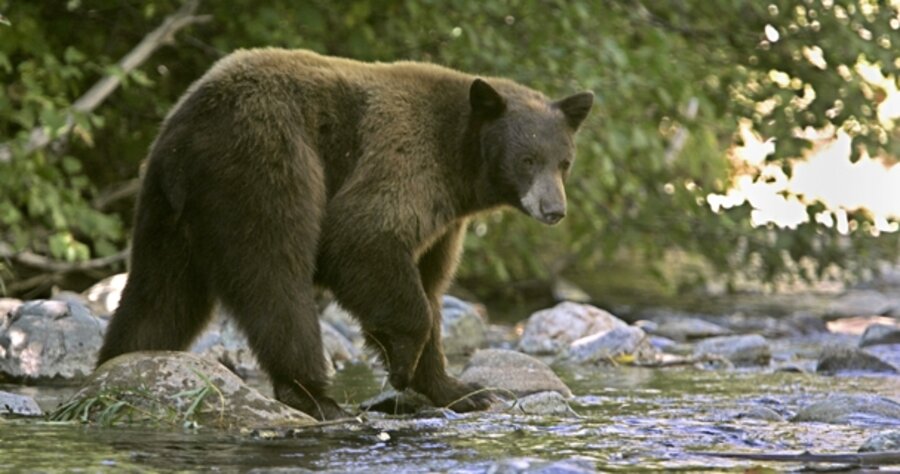How studying DNA from ancient animals helps humans
Loading...
While on the campaign trail this fall, Senator John McCain would laugh at government-funded research on the DNA of bears. What would he think of the research on DNA from extinct cave bears that now has elucidated the bear family tree? It’s the latest example of how scientists are using the increasingly sharp cutting-edge of DNA research to clarify the divergence of animal species, including humans.
New techniques to rapidly analyze DNA accelerate such studies. An increasing ability to garner useful data from tiny samples of DNA enable scientists to make the most of what little DNA they extract from such ancient remains as cave-bear bones.
Scientists now are beginning to glimpse the branching of Neanderthals and humans from a common ancestor some 700,000 years ago. They are studying 50,000- to 70,000-year-old DNA from such mammals as horses, wolves, and bison.
Such research is in its early stage. But a brief overview of its potential, published in the journal Science in July, concluded that it has “profound implications for exploring the biology of ancient organisms.”
The cave-bear studies are a down payment on that promise.
Last July, Michael Hofreiter at Germany’s Max Planck Institute for Evolutionary Anthropology in Leipzig and his team reported DNA analyses from a 44,000-year-old cave-bear femur and a 22,000-year-old bone of an extinct American short-faced bear. Most DNA is in the nucleus of cells. But some also is in bodies called mitochondria. It was this mitochondrial DNA (mtDNA) that the Hofreiter team described in the journal BCM Evolutionary Biology.
Then, two weeks ago, the Proceedings of the National Academy of Sciences carried a description of mtDNA recovered by a team led by Jean-Marc Elalouf at the Saclay Center of France’s Atomic Energy Commission. The researchers examined a 32,000-year-old cave-bear sternum bone from the famous Chauvet Cave, home to the oldest known cave art.
Putting those data together with data from modern bears gives scientists a clearer view of how bears diverged from a common ancestor.
According to a report of this work in Science two weeks ago, it looks as though the giant panda split from the line that leads to today’s eight living species of bears. Also, the cave bear and today’s brown bears and polar bears had a common ancestor.
In the Science report, Hervé Bocherens, an evolutionary biologist at Germany’s University of Tübingen, said the larger significance of this research is that it “opens the field of complete mitochondrial [DNA] sequencing to a very wide range of extinct species.”
Knowing the DNA lineage of animals can also have potential economic benefits. Purdue University reports that professor Bill Muir has taken a good look at the DNA of commercial strains of chickens and found it literally to be lacking. He finds they lack about half the genetic diversity, including genes linked to disease resistance, of the native species from which the breeds are derived. He says that it’s important to preserve noncommercial breeds and wild birds to ensure a pool of genetic diversity from which useful genes could be bred back into commercial chickens.
Given the potential payoffs in scientific – and even economically useful – knowledge, studying the DNA of wild animals hardly seems a waste of money.





